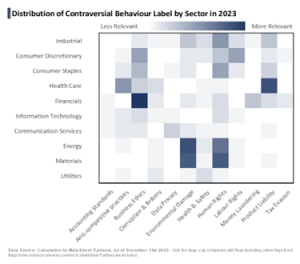Published
1 hour ago
on
June 19, 2024 Graphics/Design:
See this visualization first on the Voronoi app.
All of the World’s Trillion-Dollar Companies in One Chart
This was originally posted on our Voronoi app. Download the app for free on iOS or Android and discover incredible data-driven charts from a variety of trusted sources.
Chipmaker Nvidia is now the world’s most valuable company, which means its time for an update to our frequent “trillion-dollar club” post.
In this graphic, we’ve visualized the market capitalizations of the world’s trillion-dollar companies, as of June 18, 2024. Included for additional context is the market cap of the median S&P 500 firm (as of May 30, 2024), as well as Taiwan’s TSMC, which is the next closest company to reaching the $1 trillion milestone.
Data and Key Takeaways
The figures used to create this graphic are included in the table below. Numbers for each company come from Companiesmarketcap.com, while the median S&P 500 market cap was sourced from S&P Global.
CompanyMarket Cap (USD) 🇺🇸 Nvidia$3.34T 🇺🇸 Microsoft$3.32T 🇺🇸 Apple$3.29T 🇺🇸 Alphabet$2.17T 🇺🇸 Amazon$1.90T 🇸🇦 Saudi Aramco$1.79T 🇺🇸 Meta$1.27T 🇹🇼 TSMC$932B Median S&P 500 company$92B
Here are the key reasons behind each of these companies’ massive valuations:
Nvidia: Industry leader in data center chips, essential for training artificial intelligence Microsoft: Dominance in enterprise software products (e.g. Windows, Office, Azure) Apple: Strong track record of innovation and a large, loyal customer base Alphabet: Leading player in online advertising and other digital platforms (e.g. Google Search, Youtube) Amazon: Dominance in e-commerce and rising cloud computing market share through Amazon Web Services (AWS) Saudi Aramco: World’s largest oil producer with massive reserves Meta: Dominant player in social media (Facebook, Instagram, Whatsapp)
If you’re interested in learning more, check out our graphic: Visualizing How Big Tech Companies Make Their Billions.
Which Company Will Hit $1 Trillion Next?
As of June 18, there are a few candidates that could soon join the trillion-dollar club, including TSMC ($932B), Berkshire Hathaway ($881B), Eli Lilly ($847B), and Broadcom ($839B).
Most of these stocks have climbed significantly in 2024 so far, with TSMC up 77% since the start of
